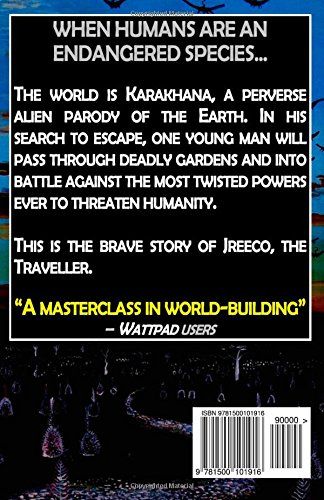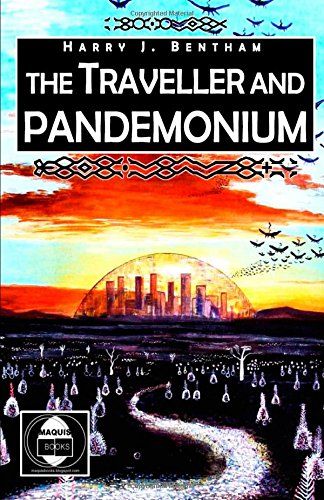AN ACTUAL EXCHANGE BETWEEN THE ROYAL DUTCH SHELL WORLDWIDE CEO AND THE ROYAL DUTCH SHELL WORLDWIDE CHIEF STRATEGIST!

AN ACTUAL EXCHANGE BETWEEN THE ROYAL DUTCH SHELL WORLDWIDE CEO AND THE ROYAL DUTCH SHELL WORLDWIDE CHIEF STRATEGIST!
QUESTION: HOW CAN WE ILLUSTRATE MR. ANDRES AGOSTINI’S CONCURRENT COORDINATED CONVERGENT SYSTEMS THINKING (CCCST): ARTICULATED UNDER INTELLIGENCE AUGMENTATION AND AMPLIFICATION (IAA) VIA ASIN: B00KNL02ZE ANSWER: BY PAYING ATTENTION TO AN INDOORS INTERVIEW BY THE ROYAL DUTCH SHELL HERE:
Many world-class zillion-dollars corporations go to huge unknown distances to make a difference in sustaining and guaranteeing their For-Lucre Competitive Advantage. Shell, as many others are a good example of this, through many, many decades to date. I was fully trained and thoroughly indoctrinated by Shell to this end a long time ago while I keep always researching their latest canonical milestones. However, my ongoing research considers and analyzes the findings of many other zillion-dollar corporations beyond, by far, those of Royal Dutch Shell.
Governments, governmental agencies, political bodies, universities (including those into strong R&D&I), as well as a myriad of other companies, supranationals and NGOs, DO NOT EVER ATTEMPT TO DO THIS. THEY THINK THAT SEEKING KNOWLEDGE THIS WAY IS A CLEAR SIGN OF INSANITY.
Nothing, and nothing at all, will preclude Shell and other Fortune-7 Corporations to seek out and seize boundaryless knowledge.
All of my assertions are backed by most-updated brick-and-mortar books and manuals. I can give you a brief general idea, but my time and researched proprietary findings are extremely expensive for me to tell you about where to find those contents.
The combined knowledge of my research is a part of an infinitely larger ongoing proprietary research effort by me. Through many, many years, these books and manuals and handbooks have been physically published but you did not found out then. But many publications were only found through proprietary literature only.
When you want to access proprietary literature, you handsomely pay for it. Otherwise, it is impossible to gain access to that.
Everything I have or have had, I capitalistically paid for CASH AND IN FULL. If you are a commie, this is not for you or any other forms of hippies and chronies.
FOR INSTANCE:
Star Trek’s Captain Spock told James T. Kirk: “… Jim, the problem with you is that you always proceed from false assumptions … And being a Volcan and thus different from you, I have no ego to bruise …”
LET US NOW GET BACK TO OUR REAL-LIFE EXCHANGE AS PER ROYAL DUTCH SHELL:
Royal Dutch Shell Worldwide CEO: “…Okay, How is the strategic planning going along for the forthcoming year? …”
Royal Dutch Shell Chief Worldwide Strategist: “…Very well, sir…We are introducing some novelties to our corporation-wide strategic planning, strategizing and strategic execution …!…”
Royal Dutch Shell Worldwide CEO: “…Can you give me some specifics? …”
Royal Dutch Shell Chief Worldwide Strategist: “…Well, sir, our most unconventional and heterodox thinking and strategizing have always gone to a far-fetched fringe, spurting twilight-zones mind-sets while ridiculing the minimal and precarious notion of so-called ‘out-of-the-box’ thinking … So, this year we have a roaster of out-of-this-world people to interview in order to underpin our strategy and outsmart Exxon-Mobil and the like in the process. All of the interviews will be heavily documented for continuous close examination …”
Royal Dutch Shell Worldwide CEO: “…Excellent, I really like you rationale…Who is your first person to interview? …”
Royal Dutch Shell Chief Worldwide Strategist: “…Thank you. The first one will be a Maharishi, the so-called ‘Great Seer’ …”
Royal Dutch Shell Worldwide CEO: “… What will you ask him? …”
Royal Dutch Shell Chief Worldwide Strategist: “…We will ask him open-ended questions without constraints of time: a) How do you see the world? b) What are humans missing? c) How can we make life better for all? d) If you were the U.N. Secretary General, What would you change in the civilization?…”
Royal Dutch Shell Worldwide CEO: “…Excellent, Who is next in your list?…”
Royal Dutch Shell Chief Worldwide Strategist: “… Drashtara, Sanskrit for the Techno-Harbinger …”
Royal Dutch Shell Worldwide CEO: “… What will you ask him? …”
Royal Dutch Shell Chief Worldwide Strategist: “…We will ask him open-ended questions without constraints of time: a) How do you see the world? b) What are humans missing? c) How can we make life better for all? d) If you were the U.N. Secretary General, What would you change in the civilization?…”
Royal Dutch Shell Worldwide CEO: “…Excellent, Who is next in your list?…”
Royal Dutch Shell Chief Worldwide Strategist: “…The Awaken Ones …”
Royal Dutch Shell Worldwide CEO: “… What will you ask him? …”
Royal Dutch Shell Chief Worldwide Strategist: “…We will ask him open-ended questions without constraints of time: a) How do you see the world? b) What are humans missing? c) How can we make life better for all? d) If you were the U.N. Secretary General, What would you change in the civilization?…”
Royal Dutch Shell Worldwide CEO: “…Excellent, Who is next in your list?…”
Royal Dutch Shell Chief Worldwide Strategist: “… Auspiciousness, a female spiritual leader of great audiences in the East and West …”
Royal Dutch Shell Worldwide CEO: “… What will you ask her? …”
Royal Dutch Shell Chief Worldwide Strategist: “…We will ask her open-ended questions without constraints of time: a) How do you see the world? b) What are humans missing? c) How can we make life better for all? d) If you were the U.N. Secretary General, What would you change in the civilization?…”
Royal Dutch Shell Worldwide CEO: “…Excellent, Who is next in your list?…”
Royal Dutch Shell Chief Worldwide Strategist: “… A Catholic Bishop…”
Royal Dutch Shell Worldwide CEO: “… What will you ask him? …”
Royal Dutch Shell Chief Worldwide Strategist: “…We will ask him open-ended questions without constraints of time: a) How do you see the world? b) What are humans missing? c) How can we make life better for all? d) If you were the U.N. Secretary General, What would you change in the civilization?…”
Royal Dutch Shell Worldwide CEO: “…Excellent, Who is next in your list?…”
Royal Dutch Shell Chief Worldwide Strategist: “…A Tel-avid Rabbi …”
Royal Dutch Shell Worldwide CEO: “… What will you ask him? …”
Royal Dutch Shell Chief Worldwide Strategist: “…We will ask him open-ended questions without constraints of time: a) How do you see the world? b) What are humans missing? c) How can we make life better for all? d) If you were the U.N. Secretary General, What would you change in the civilization?…”
Royal Dutch Shell Worldwide CEO: “…Excellent, Who is next in your list?…”
Royal Dutch Shell Chief Worldwide Strategist: “… A Lama …”
Royal Dutch Shell Worldwide CEO: “… What will you ask him? …”
Royal Dutch Shell Chief Worldwide Strategist: “…We will ask him open-ended questions without constraints of time: a) How do you see the world? b) What are humans missing? c) How can we make life better for all? d) If you were the U.N. Secretary General, What would you change in the civilization?…”
Royal Dutch Shell Worldwide CEO: “…Excellent, Who is next in your list?…”
Royal Dutch Shell Chief Worldwide Strategist: “ … An Ayatollah …”
Royal Dutch Shell Worldwide CEO: “… What will you ask him? …”
Royal Dutch Shell Chief Worldwide Strategist: “…We will ask him open-ended questions without constraints of time: a) How do you see the world? b) What are humans missing? c) How can we make life better for all? d) If you were the U.N. Secretary General, What would you change in the civilization?…”
Royal Dutch Shell Worldwide CEO: “…Excellent, Who is next in your list?…”
Royal Dutch Shell Chief Worldwide Strategist: “…A Witch…”
Royal Dutch Shell Worldwide CEO: “… What will you ask her? …”
Royal Dutch Shell Chief Worldwide Strategist: “…We will ask her open-ended questions without constraints of time: a) How do you see the world? b) What are humans missing? c) How can we make life better for all? d) If you were the U.N. Secretary General, What would you change in the civilization?…”
Royal Dutch Shell Worldwide CEO: “…Excellent, Who is next in your list?…”
Royal Dutch Shell Chief Worldwide Strategist: “…A Saucerer…”
Royal Dutch Shell Worldwide CEO: “… What will you ask her? …”
Royal Dutch Shell Chief Worldwide Strategist: “…We will ask her open-ended questions without constraints of time: a) How do you see the world? b) What are humans missing? c) How can we make life better for all? d) If you were the U.N. Secretary General, What would you change in the civilization?…”
Royal Dutch Shell Worldwide CEO: “…Excellent, Who is next in your list?…”
Royal Dutch Shell Worldwide CEO: “…You list is nice but a bit too conventional for my profitable ambitions. What are you exactly going to do about it to fundamentally solve your shortcomings? …”
Royal Dutch Shell Chief Worldwide Strategist: “…Sir, we are going to interview, as well, many other thought leaders, including many purposeful mentally-ill ponderers!…”
Royal Dutch Shell Worldwide CEO: “…Like whom? …”
Royal Dutch Shell Chief Worldwide Strategist: “…Sir, a Schizophrenic …”
Royal Dutch Shell Worldwide CEO: “… What will you ask her? …”
Royal Dutch Shell Chief Worldwide Strategist: “…We will ask her open-ended questions without constraints of time: a) How do you see the world? b) What are humans missing? c) How can we make life better for all? d) If you were the U.N. Secretary General, What would you change in the civilization?…”
Royal Dutch Shell Worldwide CEO: “…Excellent, Who else? …”
Royal Dutch Shell Chief Worldwide Strategist: “… One person undergoing Clinical Delusional Disorder …”
Royal Dutch Shell Worldwide CEO: “… What will you ask him? …”
Royal Dutch Shell Chief Worldwide Strategist: “…We will ask him open-ended questions without constraints of time: a) How do you see the world? b) What are humans missing? c) How can we make life better for all? d) If you were the U.N. Secretary General, What would you change in the civilization?…”
Royal Dutch Shell Worldwide CEO: “…Excellent, Who else? …”
Royal Dutch Shell Chief Worldwide Strategist: “… Someone into Clinical Hallucinations …”
Royal Dutch Shell Worldwide CEO: “… What will you ask him? …”
Royal Dutch Shell Chief Worldwide Strategist: “…We will ask him open-ended questions without constraints of time: a) How do you see the world? b) What are humans missing? c) How can we make life better for all? d) If you were the U.N. Secretary General, What would you change in the civilization?…”
Royal Dutch Shell Worldwide CEO: “…Excellent, Who else? …”
Royal Dutch Shell Chief Worldwide Strategist: “…Someone into Clinical Histrionic or Narcissistic …”
Royal Dutch Shell Worldwide CEO: “… What will you ask her? …”
Royal Dutch Shell Chief Worldwide Strategist: “…We will ask her open-ended questions without constraints of time: a) How do you see the world? b) What are humans missing? c) How can we make life better for all? d) If you were the U.N. Secretary General, What would you change in the civilization?…”
Royal Dutch Shell Worldwide CEO: “…Excellent, Who else? …”
Royal Dutch Shell Chief Worldwide Strategist: “… A Guru from India …”
Royal Dutch Shell Worldwide CEO: “… What will you ask her? …”
Royal Dutch Shell Chief Worldwide Strategist: “…We will ask her open-ended questions without constraints of time: a) How do you see the world? b) What are humans missing? c) How can we make life better for all? d) If you were the U.N. Secretary General, What would you change in the civilization?…”
Royal Dutch Shell Worldwide CEO: “…Excellent, Who else? …”
Royal Dutch Shell Chief Worldwide Strategist: “… A Yogi from India …”
Royal Dutch Shell Worldwide CEO: “… What will you ask him? …”
Royal Dutch Shell Chief Worldwide Strategist: “…We will ask him open-ended questions without constraints of time: a) How do you see the world? b) What are humans missing? c) How can we make life better for all? d) If you were the U.N. Secretary General, What would you change in the civilization?…”
Royal Dutch Shell Worldwide CEO: “…Excellent, Who else? …”
Royal Dutch Shell Chief Worldwide Strategist: “… An Oracle from the Tibet …”
Royal Dutch Shell Worldwide CEO: “… What will you ask him? …”
Royal Dutch Shell Chief Worldwide Strategist: “…We will ask him open-ended questions without constraints of time: a) How do you see the world? b) What are humans missing? c) How can we make life better for all? d) If you were the U.N. Secretary General, What would you change in the civilization?…”
Royal Dutch Shell Worldwide CEO: “…Excellent, Who else? …”
Royal Dutch Shell Chief Worldwide Strategist: “… A Kabbalah Mystic …”
Royal Dutch Shell Worldwide CEO: “… What will you ask him? …”
Royal Dutch Shell Chief Worldwide Strategist: “…We will ask him open-ended questions without constraints of time: a) How do you see the world? b) What are humans missing? c) How can we make life better for all? d) If you were the U.N. Secretary General, What would you change in the civilization?…”
Royal Dutch Shell Worldwide CEO: “…Excellent, Who else? …”
Royal Dutch Shell Chief Worldwide Strategist: “… A Witch …”
Royal Dutch Shell Worldwide CEO: “… What will you ask her? …”
Royal Dutch Shell Chief Worldwide Strategist: “…We will ask him open-ended questions without constraints of time: a) How do you see the world? b) What are humans missing? c) How can we make life better for all? d) If you were the U.N. Secretary General, What would you change in the civilization?…”
Royal Dutch Shell Worldwide CEO: “… Excellent, Who else? …”
Royal Dutch Shell Chief Worldwide Strategist: “… A Brazilian Shaman …”
Royal Dutch Shell Worldwide CEO: “… What will you ask him? …”
Royal Dutch Shell Chief Worldwide Strategist: “…We will ask him open-ended questions without constraints of time: a) How do you see the world? b) What are humans missing? c) How can we make life better for all? d) If you were the U.N. Secretary General, What would you change in the civilization?…”
Royal Dutch Shell Worldwide CEO: “… Excellent, Who else? …”
Royal Dutch Shell Chief Worldwide Strategist: “… A Brazilian Shaman…”
Royal Dutch Shell Worldwide CEO: “… What will you ask him? …”
Royal Dutch Shell Chief Worldwide Strategist: “…We will ask him open-ended questions without constraints of time: a) How do you see the world? b) What are humans missing? c) How can we make life better for all? d) If you were the U.N. Secretary General, What would you change in the civilization?…”
Royal Dutch Shell Worldwide CEO: “… Excellent, Who else? …”
Royal Dutch Shell Chief Worldwide Strategist: “…A Saucerer …”
Royal Dutch Shell Worldwide CEO: “… What will you ask him? …”
Royal Dutch Shell Chief Worldwide Strategist: “…We will ask him open-ended questions without constraints of time: a) How do you see the world? b) What are humans missing? c) How can we make life better for all? d) If you were the U.N. Secretary General, What would you change in the civilization?…”
Royal Dutch Shell Worldwide CEO: “… Excellent, Who else? …”
Royal Dutch Shell Chief Worldwide Strategist: “…A Savant…”
Royal Dutch Shell Worldwide CEO: “… What will you ask him? …”
Royal Dutch Shell Chief Worldwide Strategist: “…We will ask him open-ended questions without constraints of time: a) How do you see the world? b) What are humans missing? c) How can we make life better for all? d) If you were the U.N. Secretary General, What would you change in the civilization?…”
Royal Dutch Shell Worldwide CEO: “… Excellent, Who else? …”
Royal Dutch Shell Chief Worldwide Strategist: “…A Knowledgist …”
Royal Dutch Shell Worldwide CEO: “… What will you ask him? …”
Royal Dutch Shell Chief Worldwide Strategist: “…We will ask him open-ended questions without constraints of time: a) How do you see the world? b) What are humans missing? c) How can we make life better for all? d) If you were the U.N. Secretary General, What would you change in the civilization?…”
Royal Dutch Shell Worldwide CEO: “… Excellent, Who else? …”
Royal Dutch Shell Chief Worldwide Strategist: “…A Beggar …”
Royal Dutch Shell Worldwide CEO: “… What will you ask him? …”
Royal Dutch Shell Chief Worldwide Strategist: “…We will ask him open-ended questions without constraints of time: a) How do you see the world? b) What are humans missing? c) How can we make life better for all? d) If you were the U.N. Secretary General, What would you change in the civilization?…”
Royal Dutch Shell Worldwide CEO: “… Excellent, Who else? …”
Royal Dutch Shell Chief Worldwide Strategist: “…A Homeless …”
Royal Dutch Shell Worldwide CEO: “… What will you ask her? …”
Royal Dutch Shell Chief Worldwide Strategist: “…We will ask her open-ended questions without constraints of time: a) How do you see the world? b) What are humans missing? c) How can we make life better for all? d) If you were the U.N. Secretary General, What would you change in the civilization?…”
Royal Dutch Shell Worldwide CEO: “… Excellent, Who else? …”
Royal Dutch Shell Chief Worldwide Strategist: “…A Gigolo …”
Royal Dutch Shell Worldwide CEO: “… What will you ask him? …”
Royal Dutch Shell Chief Worldwide Strategist: “…We will ask him open-ended questions without constraints of time: a) How do you see the world? b) What are humans missing? c) How can we make life better for all? d) If you were the U.N. Secretary General, What would you change in the civilization?…”
Royal Dutch Shell Worldwide CEO: “… Excellent, Who else? …”
Royal Dutch Shell Chief Worldwide Strategist: “…A Wizard …”
Royal Dutch Shell Worldwide CEO: “… What will you ask him? …”
Royal Dutch Shell Chief Worldwide Strategist: “…We will ask him open-ended questions without constraints of time: a) How do you see the world? b) What are humans missing? c) How can we make life better for all? d) If you were the U.N. Secretary General, What would you change in the civilization?…”
Royal Dutch Shell Worldwide CEO: “… Excellent, Who else? …”
Royal Dutch Shell Chief Worldwide Strategist: “…A Magician …”
Royal Dutch Shell Worldwide CEO: “… What will you ask him? …”
Royal Dutch Shell Chief Worldwide Strategist: “…We will ask him open-ended questions without constraints of time: a) How do you see the world? b) What are humans missing? c) How can we make life better for all? d) If you were the U.N. Secretary General, What would you change in the civilization?…”
Royal Dutch Shell Worldwide CEO: “… Excellent, Who else? …”
Royal Dutch Shell Chief Worldwide Strategist: “…A Autistic …”
Royal Dutch Shell Worldwide CEO: “… What will you ask him? …”
Royal Dutch Shell Chief Worldwide Strategist: “…We will ask him open-ended questions without constraints of time: a) How do you see the world? b) What are humans missing? c) How can we make life better for all? d) If you were the U.N. Secretary General, What would you change in the civilization?…”
Royal Dutch Shell Worldwide CEO: “… Excellent, Who else? …”
Royal Dutch Shell Chief Worldwide Strategist: “…One undergoing Asperger’s …”
Royal Dutch Shell Worldwide CEO: “… What will you ask him? …”
Royal Dutch Shell Chief Worldwide Strategist: “…We will ask him open-ended questions without constraints of time: a) How do you see the world? b) What are humans missing? c) How can we make life better for all? d) If you were the U.N. Secretary General, What would you change in the civilization?…”
Royal Dutch Shell Worldwide CEO: “… Excellent, Who else? …”
Royal Dutch Shell Chief Worldwide Strategist: “… Every Student proactive in most-recondite Ivy-League own on-site Secret Societies … Several Prostitutes and several Tarot-card Readers, Soothsayers, Divinators, Foretellers, Predictioneers, Futilitarians, Hunches-tellers, First-Guessers, Second-Guessers, Fortunetellers, Prophets, Presagers, Premonitionists, Dictators, Anarchists, among many other savants.
Now, you can understand why people of The Netherlands OUTSMART MOTHER NATURE and are so intelligent, shrewd and mordant, as well as victorious, ready to “kill” petroleum as source of energy and impose Energy “X”.
Many, many zillion-dollars-corporations RELENTLESSLY exercise their Intellects and Strategies BY INCESSANTLY SEEKING OMNISCIENCE IN IGNORED FLANKS AND NOVEL QUADRANTS AND SPHERES. AND THROUGH THE PRECEDING, THEY MERIT AND DESERVE TO OUT-RULE THE WORLD, THE PRESENT AND THE FUTURE.
NOTHING, AND NOTHING AT ALL, WILL PRECLUDE SHELL AND OTHER FORTUNE-7 CORPORATIONS TO SEEK OUT AND SEIZE BOUNDARYLESS KNOWLEDGE.
ONLY SOURCE: Andres Agostini’s own Book:
Concurrent Coordinated Convergent Systems Thinking (CCCST): Articulated under Intelligence Augmentation and Amplification (IAA)
ASIN: B00KNL02ZE
http://amzn.to/1owe52O
By Mr. Andres Agostini
www.linkedin.com/in/andresagostini





